Engaging undergraduate and high school students in hands-on computer hardware fundamentals using FPGA board games
Introduction
-
The computer hardware industry is demanding skilled professionals to design and physically implement devices to satisfy the market. In response, the CHIPS and Science Act allocated $52 billion to support domestic semiconductor chip manufacturers, with the goal of strengthening the global competitiveness of the US chip industry.
-
There is a need for hands-on, engaging instruction that facilitates the translation of hardware complex concepts into real-life situations [1].
-
Our project, funded by the NSF’s Improving Undergraduate STEM Education (IUSE) program, aims to address this issue by developing a gamified hardware curriculum that considers various aspects of mean-
ingful and inclusive learning. -
To create the curriculum, the project team is designing and developing a set of games played collaboratively using a field-programmable gate array (FPGA) board.
-
The PICABOO (Peek Inside your Computer hArdware BOx and explOre) curriculum leverages equitable practices, experiential learning, and collaborative, inquiry-based learning approaches to support engineering identity and engineering persistence.
-
The curriculum will be offered in an elective undergraduate course for all engineering majors in two large public US universities and will be tailored to high school students’ summer program experiences focused on STEM.
-
To perform a formative evaluation of our efforts, we conducted usability testing of the first two games with seven high school students.
Theoretical Framework
We developed a conceptual framework for the PICABOO to promote engineering identity and persistence by gamifying the learning experience to foster situational interest [2] and to support students’ self-efficacy for engineering [3]. Additionally, educators’ self-efficacy also influences their confidence in teaching hardware concepts [4]. The relationships between these theoretical foundations are illustrated below and are incorporated into the design and development of the PICABOO modules.
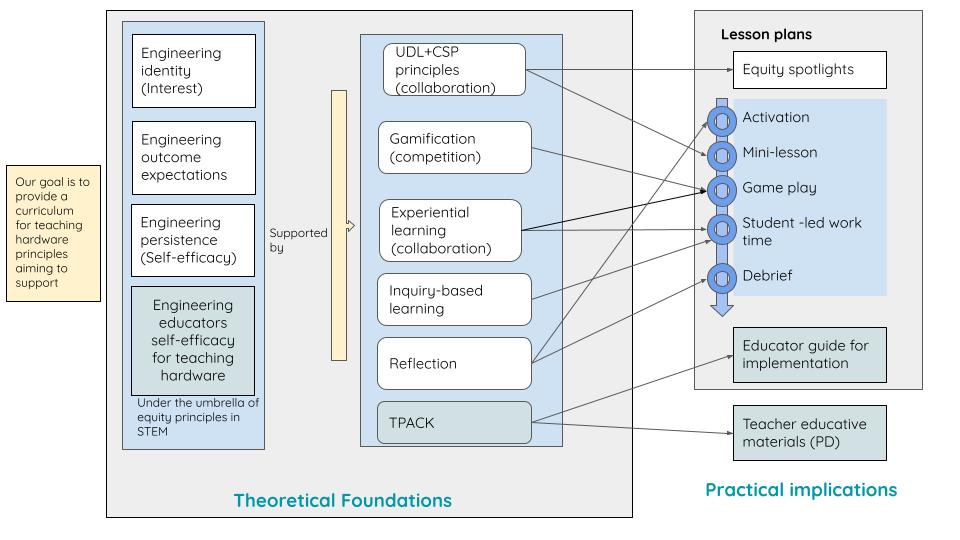
Method
The usability testing involved the first two games. The games were played on a Digilent Artix-7 FPGA. The games were designed to induce competition and collaboration among the students.
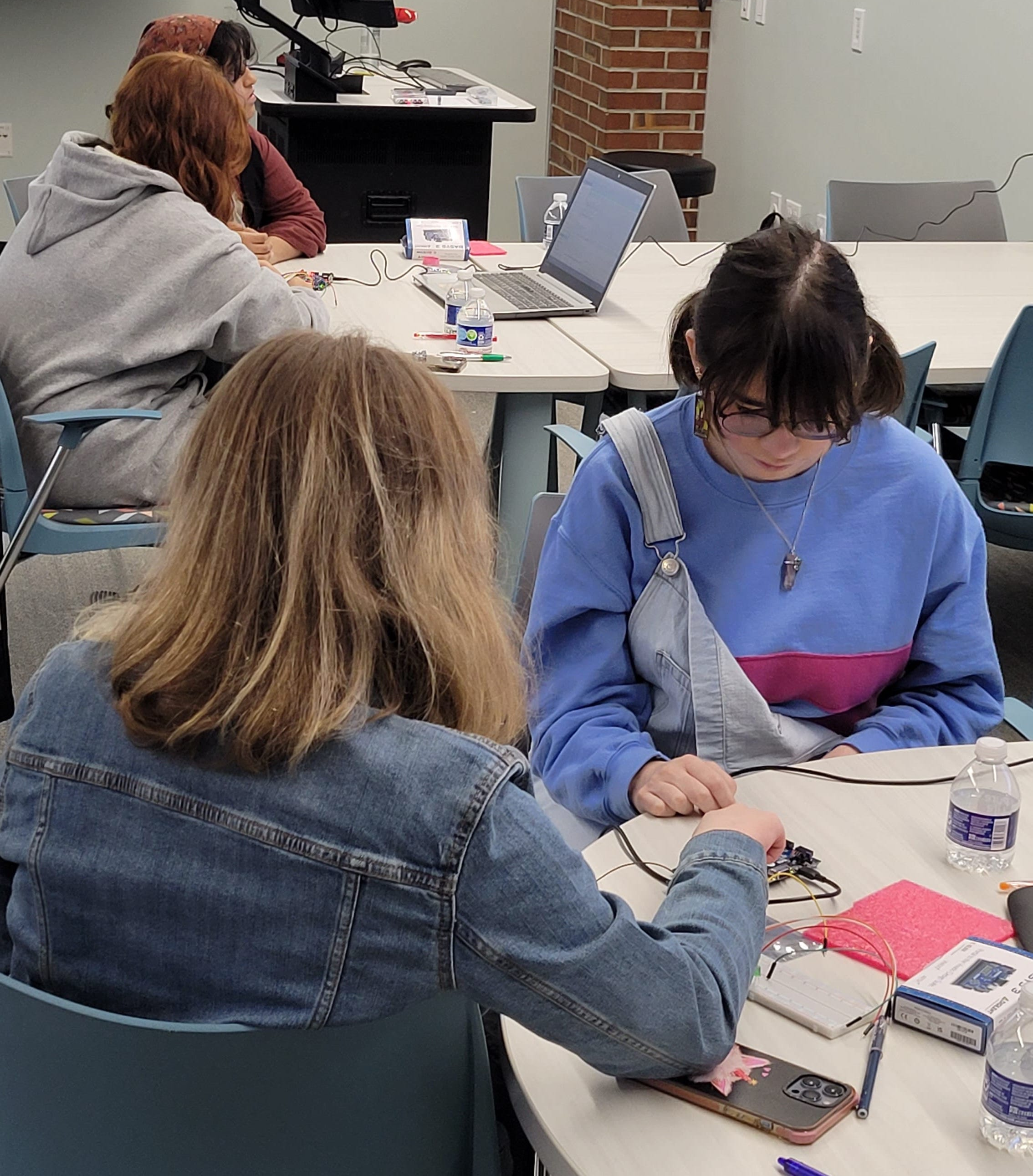
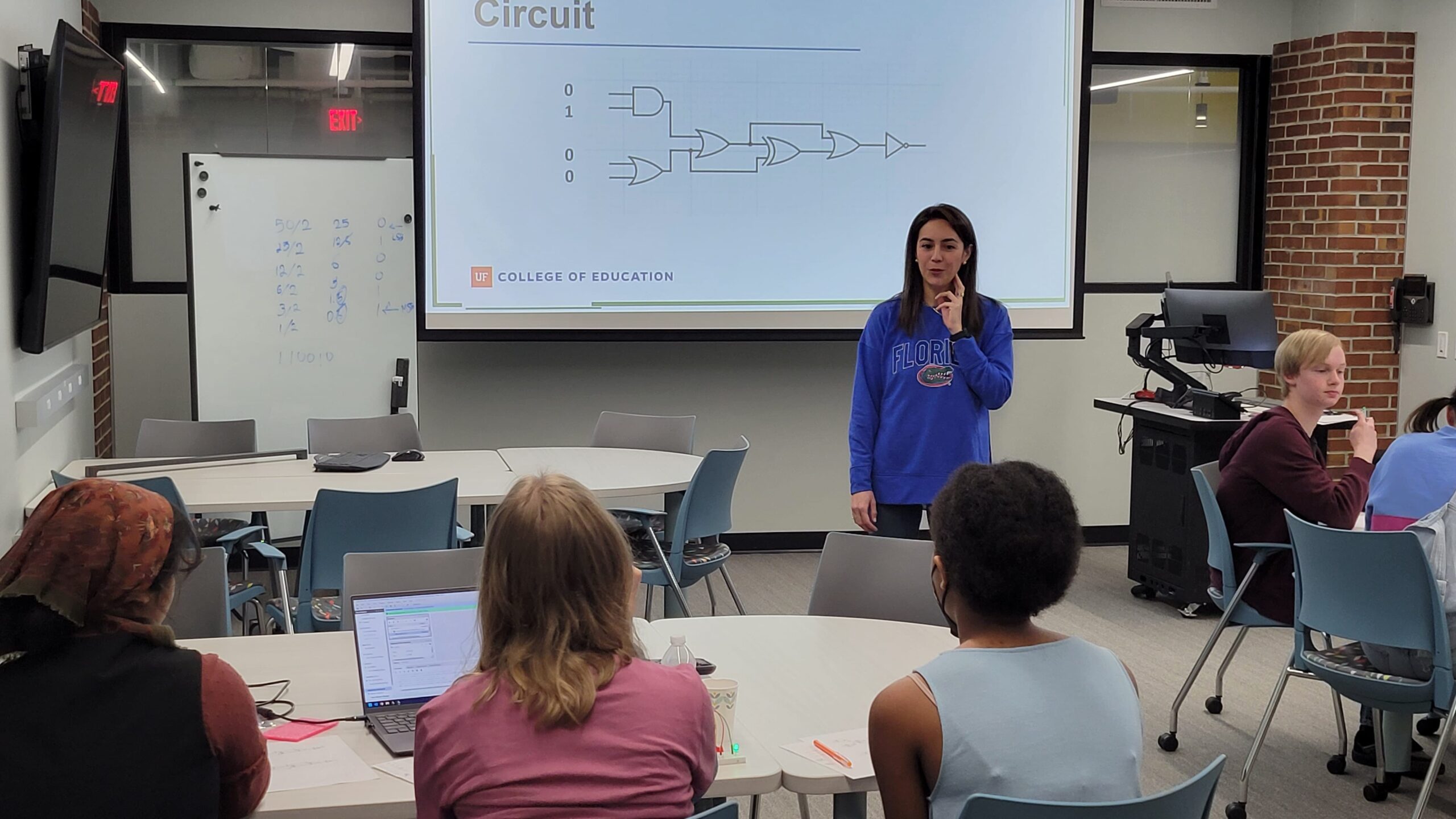
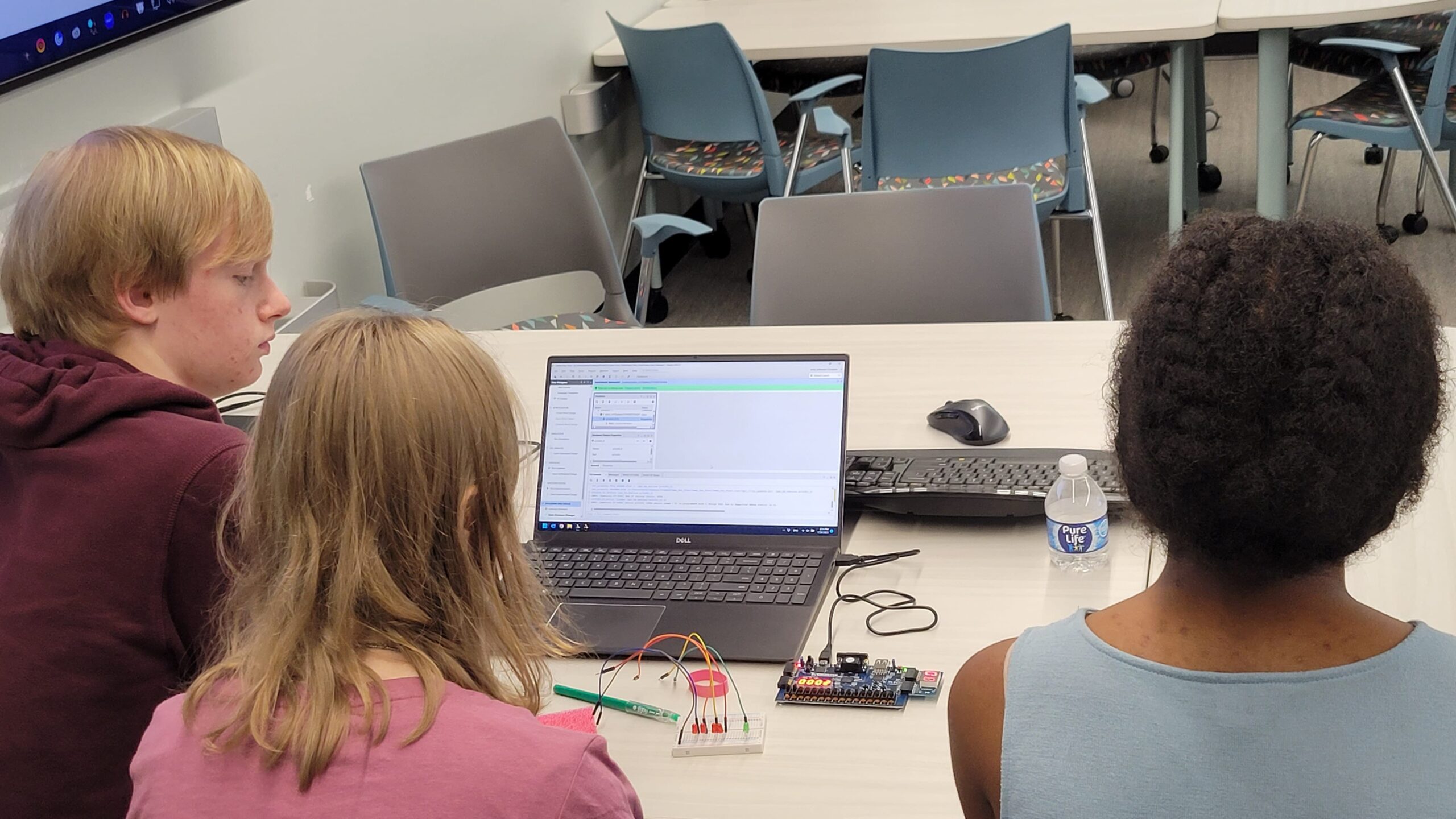
Game 1. Convert and Conquer
Convert the given decimal number to binary and send the response using the seven switches highlighted in the red box. Verify the answer in the two-digit seven-segment display attached to the right side of the board.
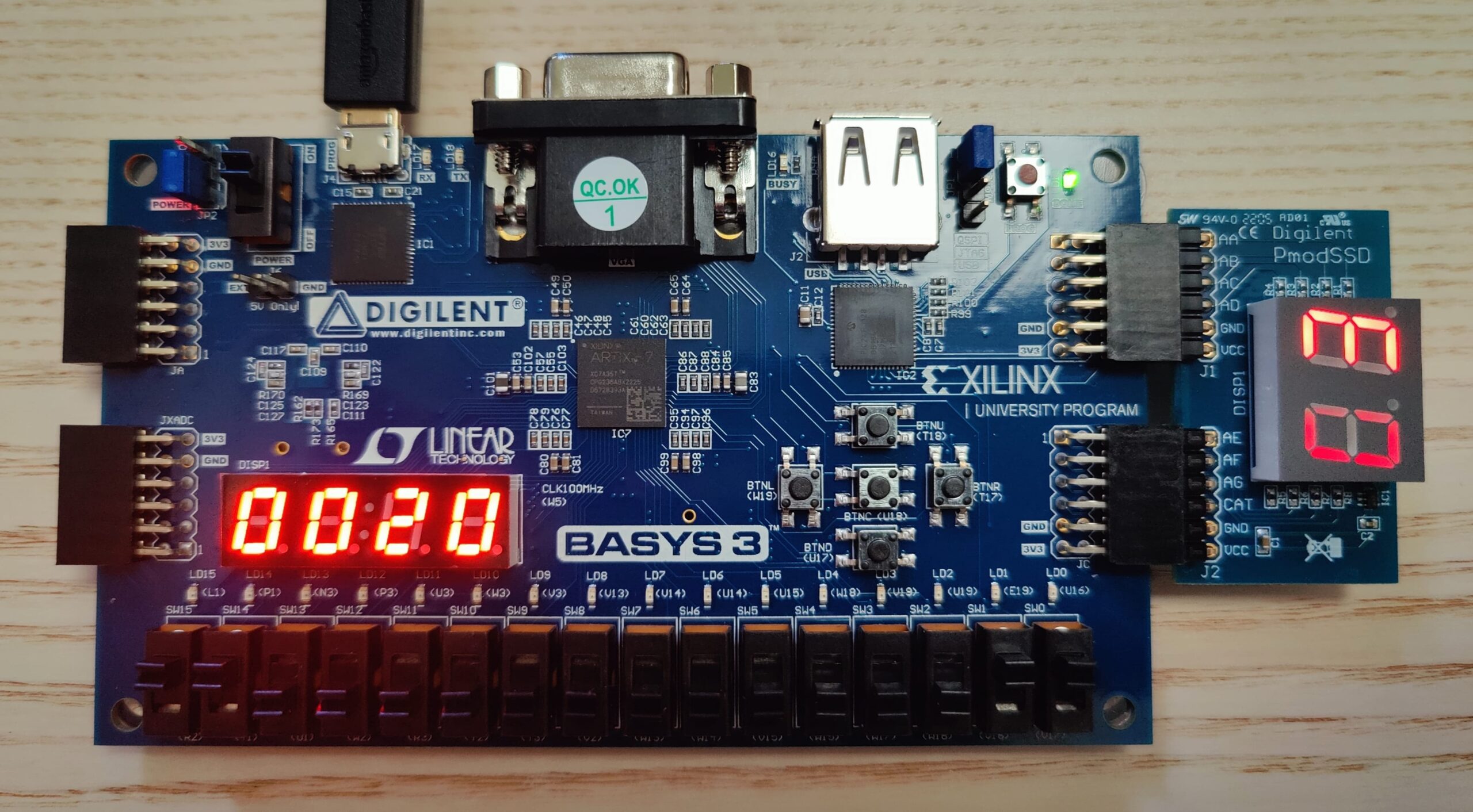
Game 2. The Gate Escape
Calculate the output of a given combinational circuit and use the switches to verify the answer on the attached breadboard. The switches for the input are high- lighted in the red box and correspond to the four red LED lights. The green LED displays the output

Measures and Data Sources
-
Participants completed a Systems Usability Score (SUS) survey after playing both games.
-
We developed an observation protocol to validate students’ behavioral, cognitive, and emotional engagement. One researcher observed the activity using the developed protocol.
-
We conducted a semi-structured focus group to gather participants’ opinions, suggestions, and aspects they enjoyed interacting with the hardware boards.
Results
-
Students reported a good understanding of the concepts and enjoyed interacting with the hardware boards in a gamified environment.
-
The FPGA board helped to think of the real-life applications of the hardware concepts and provided multiple means of representation.
-
The biggest challenge for the game design will be to reduce or scaffold the external components plugged into the main FPGA board.
-
The point system between teams fostered a safe, competitive environment. However, the timing generated anxiety and did not support the collaboration dimension.
Reference
[1] N. Ackovska and S. Ristov, “Hands-on improvements for efficient teaching computer science
students about hardware,” presented at the 2013 IEEE Global Engineering Education Conference
(EDUCON), IEEE, 2013, pp. 295–302.
[2] A. Loukomies, K. Juuti, and J. Lavonen, “Investigating situational interest in primary science lessons,” International Journal of Science Education, vol. 37, no. 18, pp. 3015–3037, 2015.
[3] B. M. Capobianco, H. A. Diefes-dux, I. Mena, and J. Weller, “What is an Engineer? Implications of Elementary School Student Conceptions for Engineering Education,” Journal of Engineering Education, vol. 100, no. 2, pp. 304–328, Apr. 2011, doi: 10.1002/j.2168-9830.2011.tb00015.x.
[4] P. J. Rich, R. A. Larsen, and S. L. Mason, “Measuring teacher beliefs about coding and computational thinking,” Journal of Research on Technology in Education, vol. 53, no. 3, pp. 296–316, Jul. 2021, doi: 10.1080/15391523.2020.1771232.
